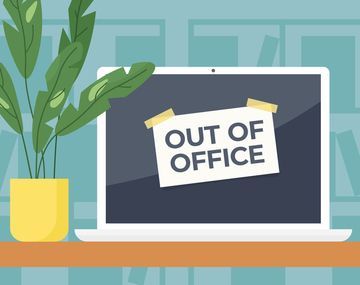Building a Healthy Work Life Balance
How to find the right balance

The COVID-19 pandemic shifted norms for the division between labor and leisure. As many office workers embraced new work-from-home practices, they experienced both gains and losses. On the one hand, many dispensed with a tedious and time-consuming commute; on the other hand, they found their work schedules blurring into evening and weekend hours. Feeling obligated to check emails at all hours, they became trapped in pervasive business routines.
Finding the right balance
Managers pay increased attention to promoting an appropriate mix of work and outside individual activities. Employees with well-rounded lives are expected to devote time and effort to many demands: family, community, social occasions, health, wellness, hobbies and cultural exposure. It is becoming accepted that employees and employers should both benefit from the integration of personal and professional spheres.
Productivity tends to diminish drastically after about 50 hours of work per week, so an optimal sweet spot might be working no more than 38 to 45 hours a week. Current models propose a holistic framework that incorporates multiple aspects, leveraging on one another. They no longer describe the day as one unit, with distinct slices allotted to work or private interests. The concept of knowledge work is based on the principle that various inputs, like ideas, analysis and data, are combined with outside activities, like intellectual exploration, experiences and communication. And then a physiological transformation occurs — more neural pathways in the brain are activated to promote innovation and creativity.
A successful work/life balance is not simply an even division between one's job and hobbies. It is more constructive to aim for a relationship between achievement and enjoyment, where neither side is sacrificed for the other. In a wider framework, the aim is to create priorities for how to spend time, which is always a precious commodity.
A happy medium
Keeping work and life in proportion is a cooperative effort; both employers and workers share the responsibility. Managers must pay attention to the individual needs of those who work for them and learn at least enough about their outside lives to accommodate where appropriate.
It is also incumbent on them to lead by example. That means refraining from dashing off nonurgent emails 24/7 or scheduling weekend or evening calls. Post-pandemic, the WFH practice is not a green light to usurp every moment of free time. Give your subordinates some leeway so they do not always feel compelled to ask permission or explain trivial activities.
But it is ultimately up to the workers to make and follow their own rules, such as:
- Set manageable, realistic goals.
- Don't procrastinate. Stick to the to-do list.
- Ask the boss for flexibility when it is really needed. Compromise and suggest proactive alternatives.
- Tackle daunting projects by dividing them into smaller tasks.
- Take regular breaks. A person can fully concentrate for only about 90 minutes at a time.
- Don't overcommit. Learn to say no. Establish boundaries.
- Enlist moral and practical support from friends, family and co-workers.
- Know their hours for peak productivity.
- Take vacations and staycations and enjoy at least one social event each week.
Drawn into the danger zone
Diverse motives drive employees to struggle to maintain an optimal work/life balance. Many assume it is in their professional interest to be seen as "hardworking." Industrious souls who burn the midnight oil are most likely to earn raises and promotions. Others who are compulsive by nature find it hard to power down until they have crossed off the final item on their to-do list.
Small-business owners in particular tend to overwork; they should consider delegating tasks such as:
- Bookkeeping.
- Data entry.
- Invoicing.
- Deliveries.
- Technical support.
- Paying bills.
- Making bank deposits.
- Travel arrangements.
- Ordering equipment/supplies.
Imbalanced work stress can trigger physical and emotional symptoms, including burnout. Back-to-back meetings, being constantly "on" and open-floor-plan offices may not be worth the toll they exact on employees. Workers must learn to juggle competing pressures, and managers must cooperate.
Copyright 2024 Industry Newsletter










